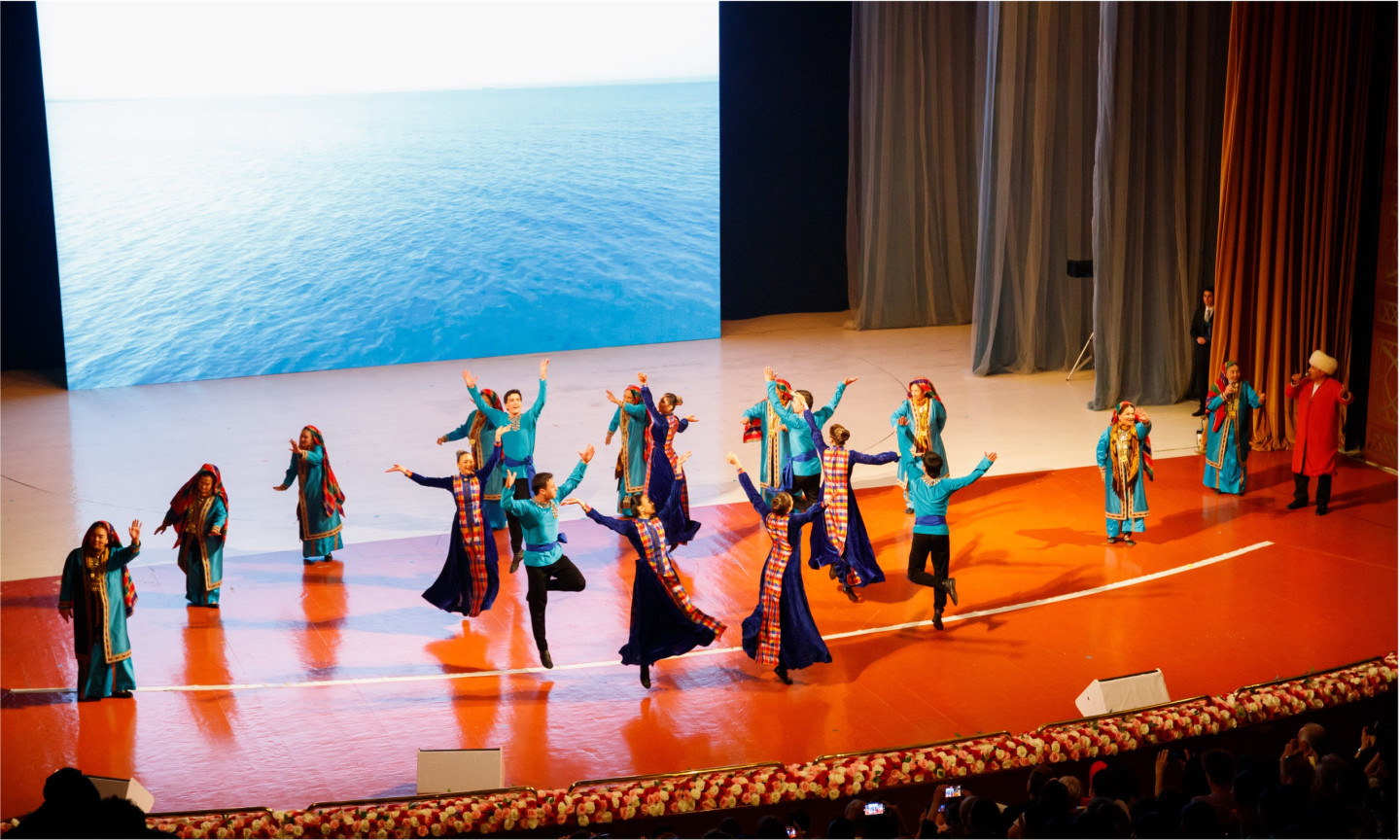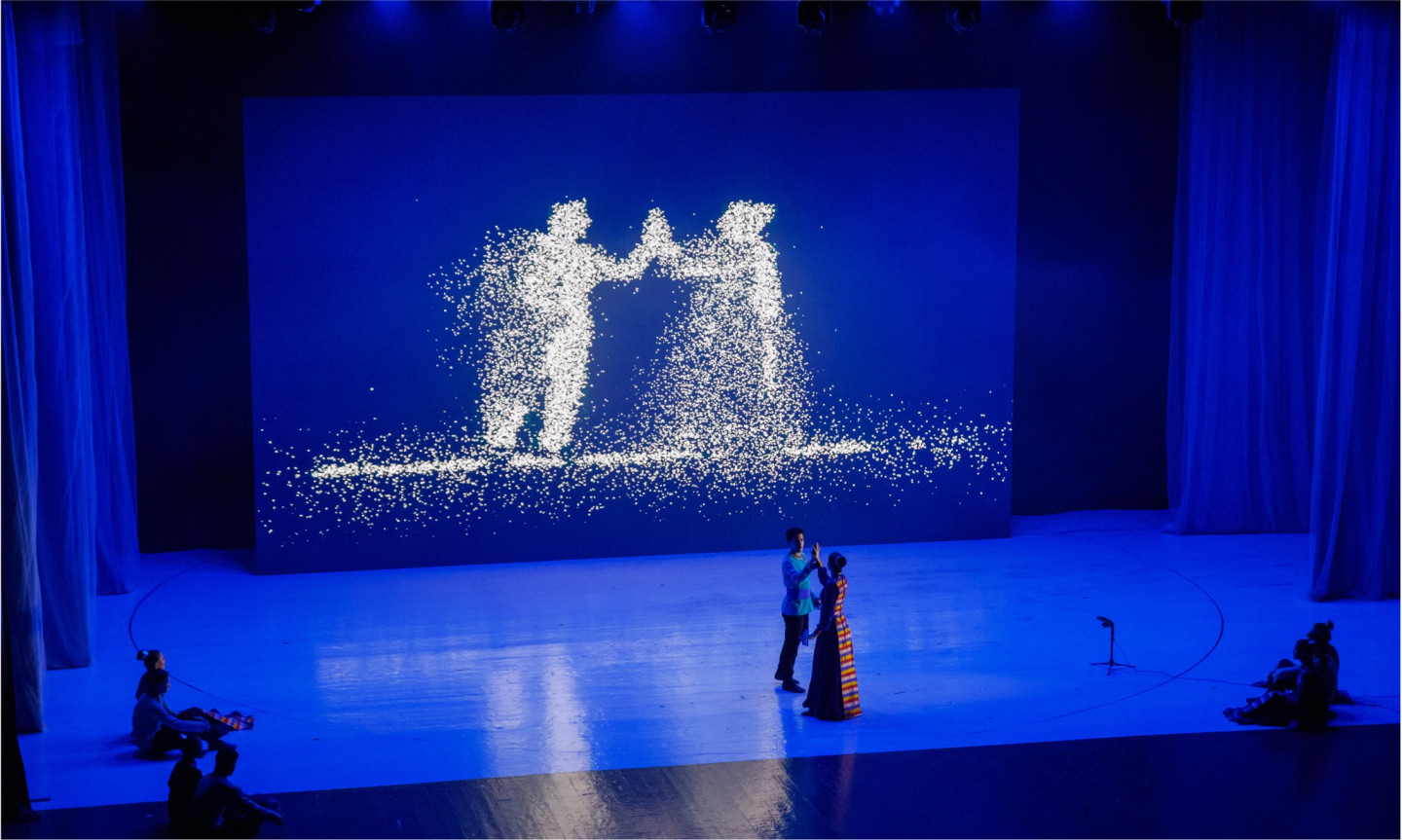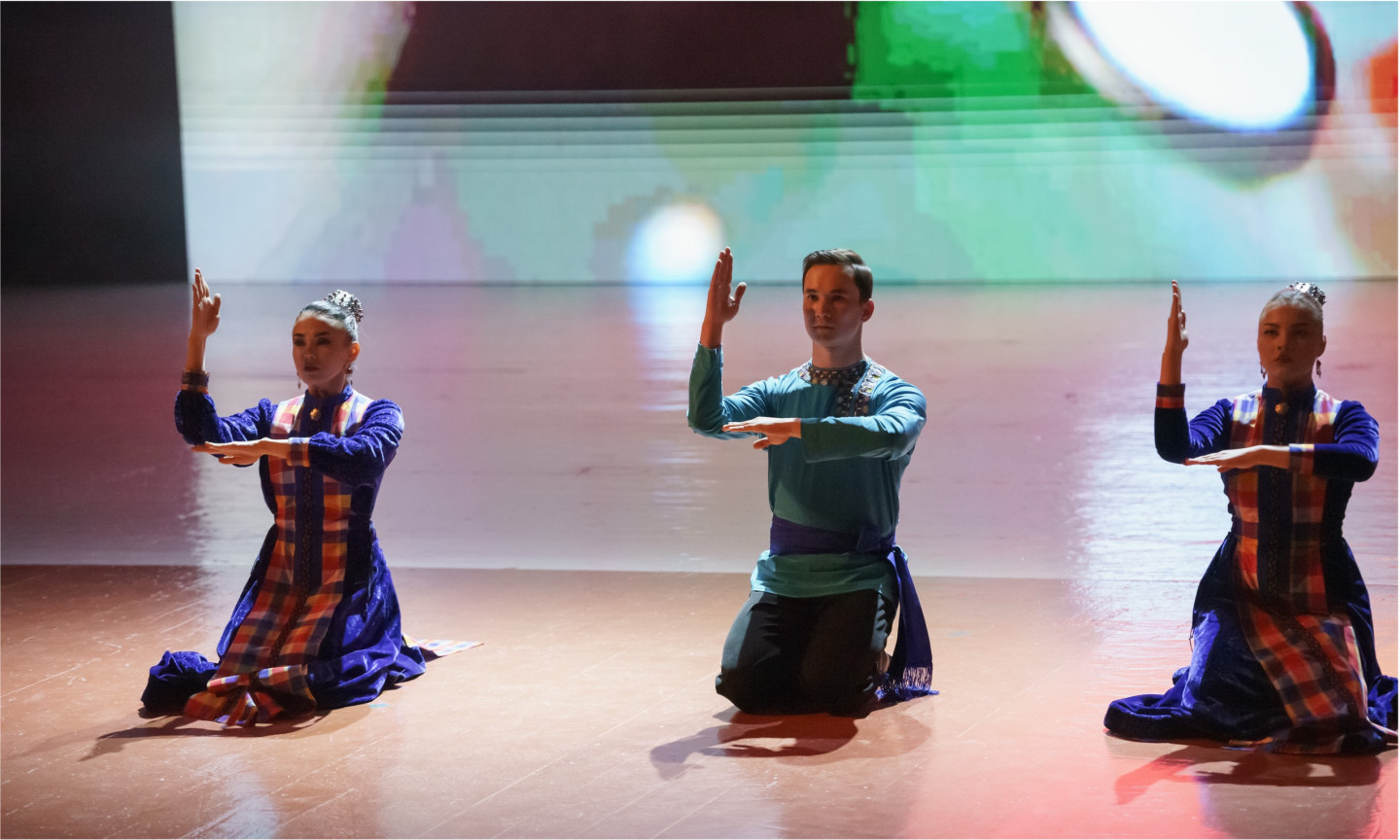Interest in new dance forms has recently emerged in Turkmenistan, but with a collapsed local dance ecosystem for the last decades, the country lacks professional trainers and infrastructure for contemporary dance.
In the early 2000’s, ballet performances disappeared from Turkmenistan and the Ashgabat Opera-Ballet Theatre was destroyed. For two decades, only folkloric dances were seen on stage. Other forms like hip hop for example currently exist at a private and informal level only. In May 2023, the French Institute, the EU Delegation to Turkmenistan and Turkmen partners seized the opportunity offered by the 30th anniversary of diplomatic relations between the European Union and Turkmenistan to bring the very first contemporary dance show to Ashgabat: Myselves, by K. Danse.
In the wake of this resounding success, a clear evolution in conversations with Turkmen officials was witnessed: a reel interest raised towards new dance forms. However, this new appraisal is followed by the common observation that the local dance ecosystem has collapsed over the past twenty years and that the country now lacks professional trainers.
Releasing the creativity of contemporary dance in Turkmenistan
Building on the current dynamics and deep roots of traditional national dance forms, the Dance Turkmenistan! project involves both folkloric and independent dancers. Relying on the ongoing European dynamics and on the deep roots of traditional national dance forms, it proposes to produce jointly the first Turkmen contemporary dance performance and to build a regional contemporary dance network through a residency in Kazakhstan.
The 2023 contemporary dance show already had a tremendous local impact. Dance Turkmenistan! aims to impulse growing effects, far beyond its timeframe. The co-produced joint contemporary dance performance will open the opportunity for Turkmen dancers to travel around the world in international dance festivals and will stand as a local reference point for further choreographic initiatives. The workshop in Ashgabat and the regional residency in Kazakhstan will be the first step of a professional contemporary dance activity Turkmenistan and the cornerstone of an emerging Central Asian dance network.
In the footsteps of this project are expected to emerge new productions, new dance groups, new local training capacities, new regional and international artistic collaborations. In short, a whole new horizon for Turkmen dancers.
As we celebrating our Europe Day, we also embrace the spirit of cultural exchange and mutual understanding that lies at the heart of peaceful coexistence between nations. Tonight’s vibrant event beautifully embodies this spirit, showcasing the power of art, and in particular dance, to bridge cultures and foster deeper connections between Europe and Turkmenistan.
Beata Peksa, EU Ambassador to Turkmenistan
In May 2025, the Mukam Palace of the National Cultural Centre of Ashgabat became the venue for the world premiere of the choreographic and digital show RITUALS—a unique artistic project blending the ancient traditions of Turkmenistan with contemporary dance and digital arts. The event marked an important milestone in the development of cultural ties between Europe and Turkmenistan.
The performance was the result of collaboration between French choreographer Jean-Marc Matos, Italian dancer and choreographer Margherita Bergamo, the State Dance Ensemble of Turkmenistan, and the State Dance Ensemble “Mengli.” RITUALS presented an artistic dialogue between European and Turkmen cultures.
The first part of the performance featured the traditional dance Kushtdepdi, inscribed on UNESCO’s Representative List of the Intangible Cultural Heritage of Humanity. It was performed by the folkloric ensemble Akjayar from Balkan velayat, where this ritual dance originates.
Alignment with UN Sustainable Development Goals
The workshop in Ashgabat, the residency in Almaty the co-production of a first contemporary dance performance in Turkmenistan, between Turkmen and EU artists, based on the Kushtdepdi traditions (UNESCO Intangible Cultural Heritage) all address various issues currently faced by independent Turkmen dancers in training, work opportunities and therefore social inclusion. Those issues directly correspond to:
- SDG 4 - Quality education, as the activities they provide vocational education opportunities through an actual training.
- SDG 5 - Gender equality. In traditional Kushdepdi, the role of women is predominant, however current official versions often spotlight the male performance. The new co-production will address this issue, re-empowering women in accordance with the Turkmen cultural heritage as well as in a more contemporary way. Moreover, the EU invited artists are one male French choreographer and one female Italian dancer/trainer, both leading one of the activities (co-production/workshop) and both fully engaged in both activities.
- SDG 8 - Decent work. Professionalisation of independent Turkmen dancers through artistic collaborations and dance sector structuring will provide an opportunity to escape informal employment.
- SDG 9 - Innovation, by introducing the use of digital tools in Turkmen performing arts as an added value.
- SDG 10 - Reduced inequalities: the regional contemporary dance network that will be created through the Almaty residency will aim to support social inclusion of independent contemporary dancers.
Altogether, this project enhances North-South (co-production/workshop), South-South (regional residency) and triangular regional and international cultural cooperation, meeting SDG 17 - Partnerships for the Goals.



